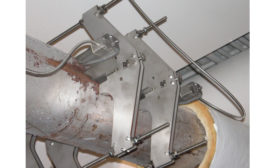Home » energy efficiency upgrades
Articles Tagged with ''energy efficiency upgrades''
Hosted by Havtech, event highlighted Gold LEED-earning project using Daikin technology
Read More
Refrigeration Retrofits Offer ‘Cool’ Savings for Supermarkets
Targeted upgrades can dramatically reduce energy use
Read More
Unique Applications Optimized With Customized HVAC Solutions
Contractors find ways to solve issues for cafeteria, historic hotel, and hospital
Read More
High-Performance Projects Provide Comfort, Sustainability, and ROI
Case studies emphasize high-performance building designs and retrofits
Read More
Copyright ©2024. All Rights Reserved BNP Media.
Design, CMS, Hosting & Web Development :: ePublishing












